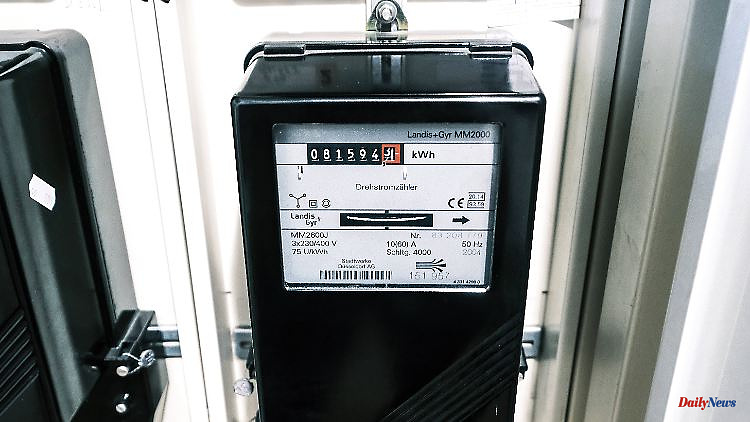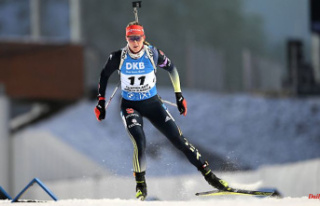Inflation is still high, but at least prices are now rising less rapidly than in recent months. That could be the peak.
Inflationary pressures are easing. In Germany, the price increase in November weakened for the first time since July, and prices in the euro zone are also no longer rising quite as sharply as in the past few months. It's entirely possible that the worst is over - even if inflation remains extraordinarily high at 10 percent.
There are some indications that the situation is slowly easing. This is mainly due to the fact that the most important driver of inflation is losing momentum. Energy prices in Germany have still shot up by around 38 percent over the year - but that is much less violently than in October with 43 percent. This is the main reason why the general price level in November was 0.5 percent lower overall than in October.
However, energy can become significantly more expensive again in January. Some suppliers have announced that they will then raise electricity and gas prices sharply. However, when it gets lighter and warmer again in the spring, energy demand will fall and prices are likely to fall. In addition, the electricity price cap and gas price brake will reduce the price pressure in the coming year.
Then there is the so-called base effect. This unwieldy term conceals the fact that the inflation rate is usually displayed on an annual basis. This means that current prices are compared to prices before the Russian war of aggression in Ukraine, which made energy in particular much more expensive. From March, the prices will then be compared with the high level after the robbery. This means that the price increase will probably be significantly lower afterwards. It is likely that electricity and gas will even become cheaper and thus have a deflationary effect.
Another argument in favor of lower inflation rates is that interest rate hikes take effect with a time lag and usually only take full effect after 12 to 18 months. After years of zero interest rates, the European Central Bank initiated a turnaround in July and raised interest rates. The consequences of this and the jumbo rate hikes that took place in the fall will only be fully felt next year. Higher interest rates are considered the classic means of combating inflation. The mechanism of action: Loans become more expensive, which reduces investment and consumption. In such an environment, companies find it more difficult to push through higher prices.
The ECB will most likely raise interest rates again at the next council meeting in mid-December, despite the fact that inflation is easing somewhat. The inflation rate is still far from the 2% target at which central bankers see price stability achieved. Interest rates will therefore continue to rise, even if the economy loses momentum as a result.
With the interest rate hikes, the ECB also wants to ensure that the population has high inflation expectations. The fruit: When inflation is widely believed to be spiraling out of control, workers across industries seek extremely high wage demands. Companies would then feel compelled to further raise prices to compensate, triggering demands for even higher wages. According to leading economists such as Marcel Fratzscher from the German Institute for Economic Research and Clemens Fuest from the Ifo Institute, this danger does not currently exist in view of the most recent wage agreements.
A contributing factor is that most economists expect that Germany will slide into a recession in the current winter half-year. As a result, the momentum on the labor market is likely to slow down. When the economy slows, entrepreneurs and consumers are more likely to keep their money together. That dampens the rise in prices.
Meanwhile, not only is inflation weakening - indicators that point to future price developments are also pointing in the direction of relaxation. One example is the producer prices that manufacturers charge for their products ex factory. They rose by a whopping 34.5 percent year-on-year in October. But a month earlier they were much higher at 45.8 percent. In a monthly comparison, prices even fell. It was the first drop since May 2020.
The inflation peak could therefore be reached or at least very close. But the decline is likely to be slow, and inflation will remain high for the time being. The fact that many companies have announced that they will pass on part of the costs to customers, despite the economic slowdown, will also contribute to this. It is questionable to what extent they will succeed in the winter recession. They're likely to try that at the latest as soon as they see room to do so as the economy picks up steam. One thing is certain: Even if inflation is eventually back in the green zone - the general price increase that has taken place up to that point will remain with us.












